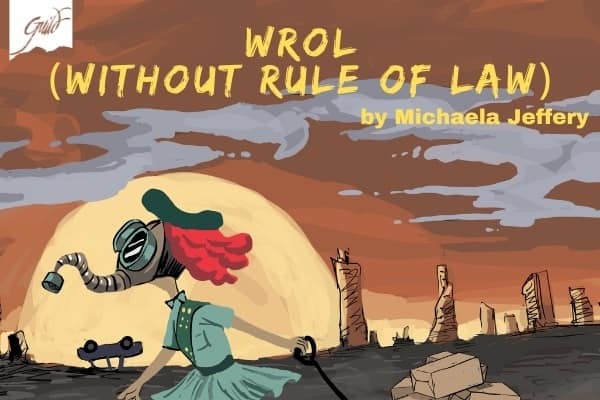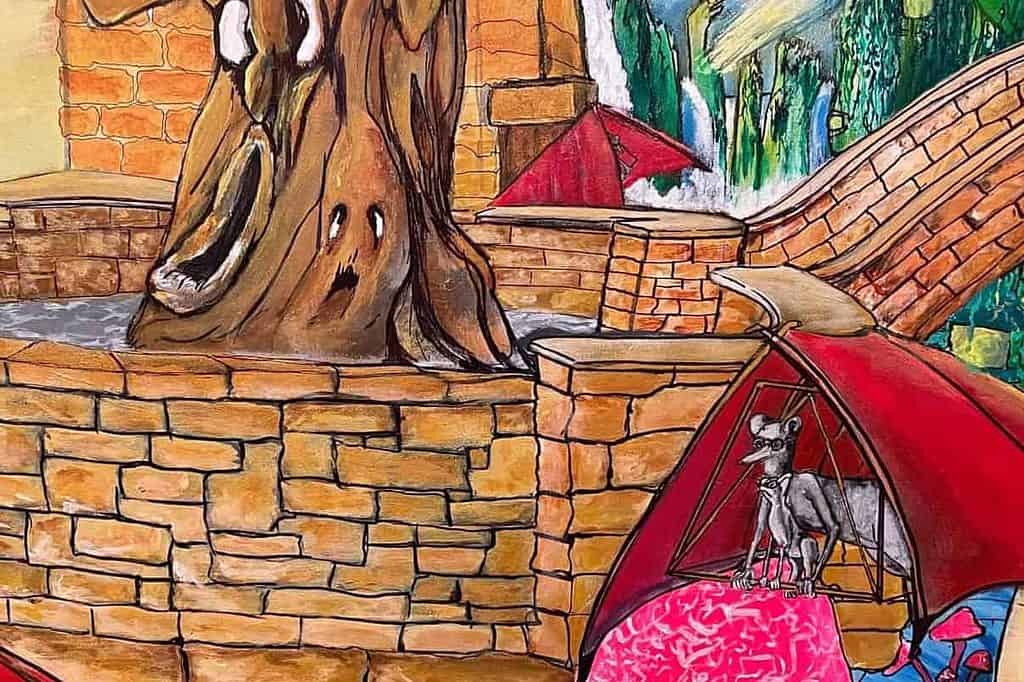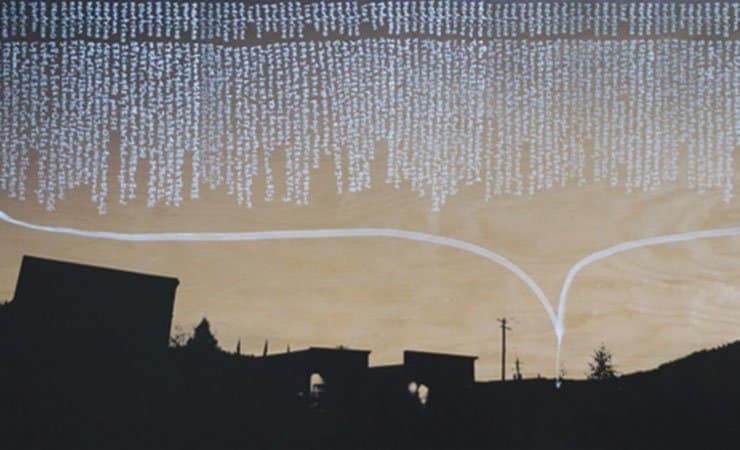Jesse Devost’s current show at Arts Underground, the grass is greener, maps out new places with paint. As a whole, the exhibition encourages us to think about about the way we use space, crowd it, and pass through it.
Devost has only been painting since 2007. Trained in geography and having worked 10 years as a cartographer, Devost wisely works with his greatest influence. He sees “the world and human behaviour through a geographical lens.”
He openly admits to never having gotten the hang of blending wet paints together. So he uses simple palettes and simple tools.
He considers the concepts behind each of the marks he makes. This simplicity is not simplistic; it’s strong. It creates impact, and every gesture of paint carries its idea.
Devost is always exploring. He’s painted on linen and canvas but also on the clear vinyl you can get at the hardware store. You can see the stretcher bars through the vinyl. Cerulean paint suspended in thick transparent medium creates falling curtains of colour in “Raft (atoll #4)”.
The paint is actually on the inside of the vinyl. The little atoll, in sand and green, seems almost scratched out, dry against the fluid marks on the rest of the vinyl, literally painted on the surface.
He uses marker, image transfer, collage, fabric paint and stamping. He uses stencils and masking tape to get the marks that work with his concept. In many places he uses a lot of medium and a little paint, and the physicality of the paint is often eloquent.
At the opening, fibre artist Kate Williams thought that perhaps “Dream houses/dust storm” was some kind of exotic textile, from a distance. It’s a black and white aerial image of streets with cul de sacs.
The backyard pools are painted a brilliant, thick, opaque blue, and then a clear red glaze is laid unevenly over the surface. The blue pool bits glitter like gems.
Williams admired many of the larger canvases which give a sense of crowding, of many houses or buildings seen from above. “It really gives that feeling you get when you’re flying in somewhere, overwhelmed by it all.”
Painter Neil Graham was also at the opening. He enjoyed “Paradise Found (atoll #1)”. Compared to the pieces crowded with repeating shapes or marks, Graham found in this canvas “a sense of relief”.
Devost has stamped a swoop of squares and rectangles across a white canvas in red fabric paint. That’s all. The locations of these rectangles, easy to read as buildings, suggest what the shape of the atoll underneath might be. The irregular texture of the stamps adds a necessary visual element to the paint.
Devost builds up his paintings layer by layer, letting layers dry in between, painting about half an hour at a time. These aren’t flat, graphic maps. This approach creates depth.
“Parkview”, the piece on the invitation card, is well worth seeing in person. There’s one void and the sense of a possible road. Other than that, Devost has mostly covered the roughly four-foot square canvas with overlapping squares and rectangles.
They’re made up of acrylic medium with just a little black paint in them. Devost cut stencils out of a margarine lid and applied the transparent paint with a foam rubber scraper brush.
This method of application creates a gradated tint culminating in black at the edges of each shape, and an almost sculptural physicality to the paint. At the lower right and edge and corner, this treatment kind of trickles away.
“Overpass #2” begins with a mottled brown treatment underneath. Soft shapes and red dots hint at some life going on that I can’t quite make out because I’m passing too quickly.
Laid over that, long brushstrokes of thinned white paint cross over, cross out, that hint at the depths I can’t quite see, challenging my imagination, and my participation in this teeming, speeding mass we call the human race.
The grass is greener is on exhibition at Arts Underground until November 1.



